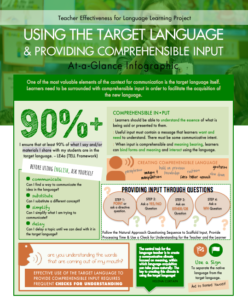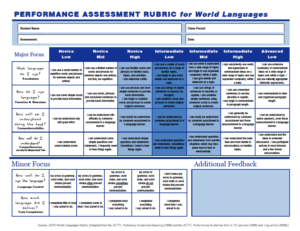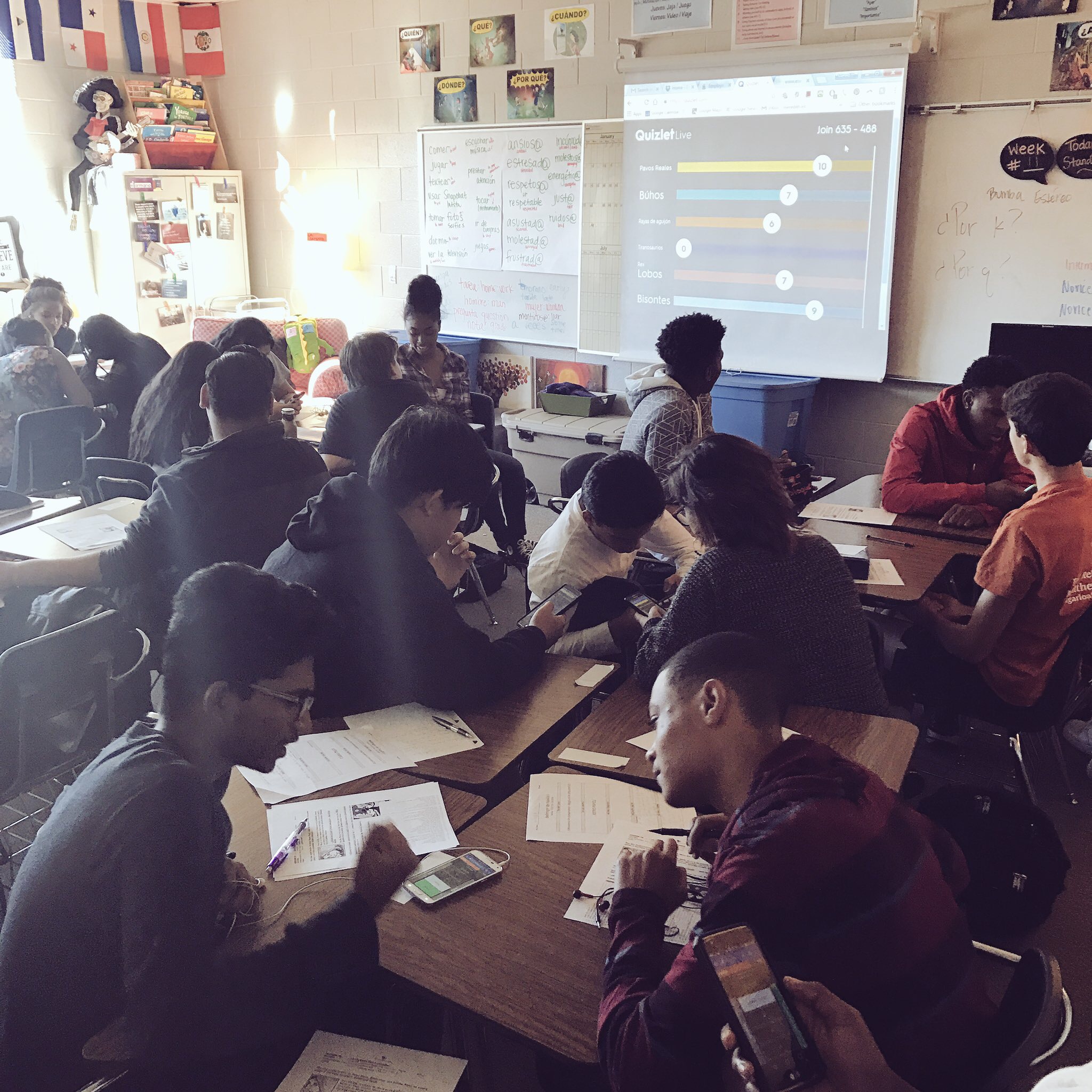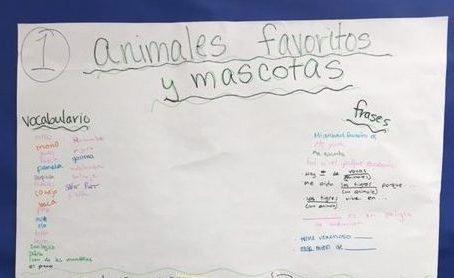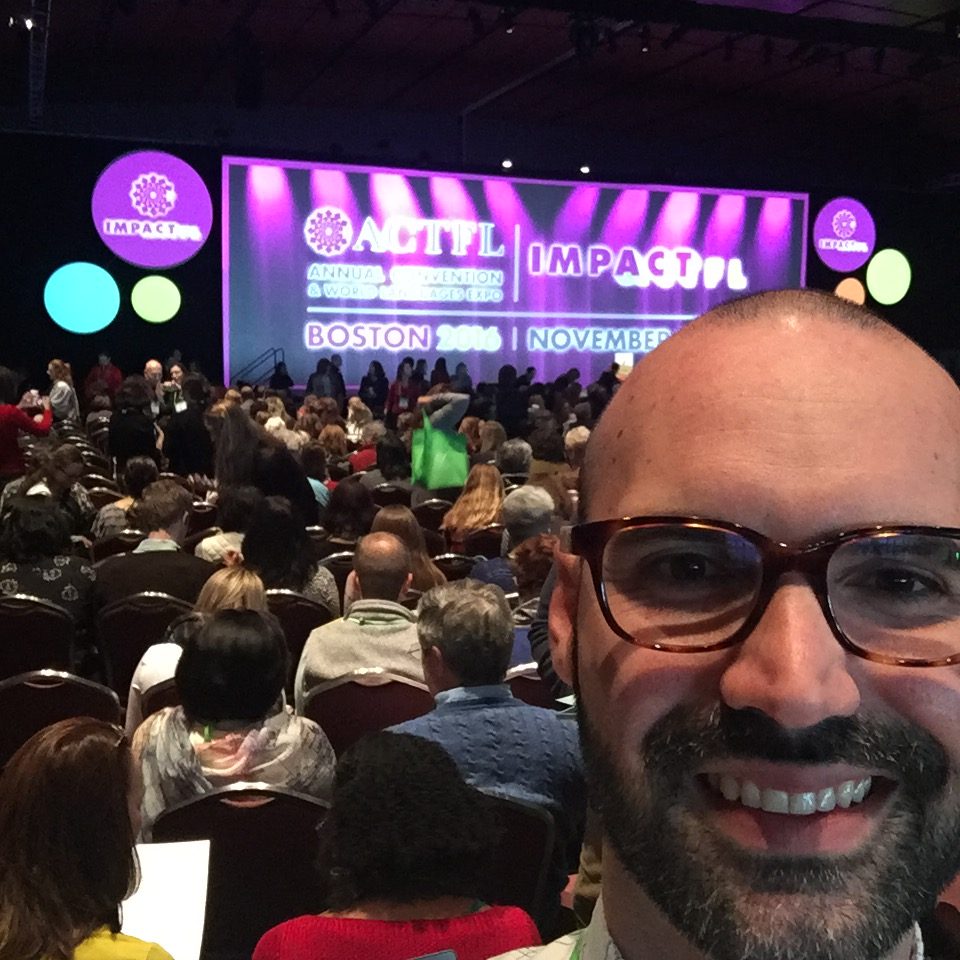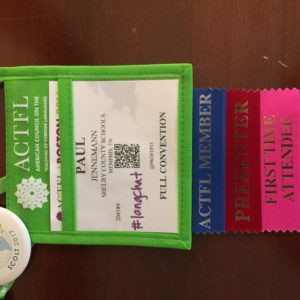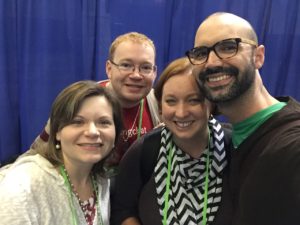Well, we’ve arrived. My husband and I are now thick in the stage of life where nearly each of our friends have one child and most have more than one. In the age of social media, we get to see these children grow up, which is pretty cool – I think of social media pictures and updates as a constant holiday card, always there when you’re ready for it. Technology can be an amazing thing! And, of course, in said pictures are activities: karate, music, soccer, basketball, math team, anime club, and much more. I can’t help but notice, more often than not, however, so many participation trophies, medals, and ribbons.
Sigh.
I hate even typing that. I am a millenial, and while my mind says, “We aren’t all special snowflakes, people!” my heart whispers, “But you are different, you can be anything…” That’s all well and great for character and confidence, and my parents made keeping our egos in check a main priority in a number of common-sense, now-comical ways. Society, however, didn’t. Society, and most of the input those of us under 35 received from the time of conception was that by golly we showed up and did our best and that’s good enough. As an adult, I see the flaw in that mindset and the habitudes it can foster (or fail to). As a teacher, it’s really hard to teach people who honestly do think they not only get an award, but also that they wholeheartedly deserve it.
Confession: Sometimes, I do participation grades.
Cringe, gulp. I know, I know.
I do hope you’re still reading and nodding your head, not shaking it. I have, for the most part, pretty highly-motivated, easygoing students. I teach using proficiency, and ACTFL guidelines, and technology, and I Can statements, and as many authentic tasks as my brain can come up with, and even a teeny bit of PBL, as I can get better at it and integrate it in — but occasionally, I use participation grades.
Why? Because if not, students won’t necessarily do it.
There, I said it.
For the most part, students really are intrinsically motivated; on top of that, we have a GREAT rapport. That combo can be unstoppable on a rainy Wednesday when I get to make a withdrawal after depositing all semester. A quick but genuine, “You OK?” and a shoulder squeeze can elicit a little smile and a continued trudge through the slump. Don’t get me wrong – I really do believe that progress is addicting and that students genuinely want to learn from their teachers, the same way they want structure and boundaries. Don’t believe me? Eavesdrop on your students from time to time and you’ll hear them say about someone, “Man, she doesn’t teach! Then we have a test and we don’t know anything!” Obviously, with teenagers we believe half of what we see and none of what we hear, but, this is an ever-present message I hear. Students know what teaching looks like and what learning feels like, and they know when both or neither are/n’t happening.
What’s making me think of all this now? Quizlet Live last Thursday.
Let me start by saying seriously, Quizlet Live is a great tool! Heck, used in combination with other things, I think Quizlet in general is a great tool. Then, they created Quizlet Live: a trivia-style, team-based game where the score is displayed on the board and students’ devices become their controller/clicker. It’s very similar to Kahoot except reverse – the question is on their device, not projected, therefore their focus is down, and there’s no time limit. Students can see their scores up front, but they have to be engaged in their device and with their team to be able to compete. You can assign specific teams or let Quizlet randomize them for you (my favorite). We’ve used it a few times this semester, I’d say three, and last Thursday was the fourth and it really made me reflect on structure (as always), expectations, and motivation. In my mind, we’d play Quizlet Live for about 15 minutes or so, and then transition to our next activity. I noticed that this time, however, because I hadn’t set parameters (thought it was so engaging that I didn’t need to – har!), suddenly students were blatantly not participating. They weren’t disrespectful or defiant, just apathetic, letting it happen around them. So as students signed on, we had about 18 names, out of 30 students. Some paired with others because their phone was almost dead, or they didn’t have data, but as I think now, that can be a bit of a cop-out, too. Between students ‘paired up’ (which I won’t allow anymore) and others just sitting and hoping/assuming they’re seen and not heard among the busy-ness of Quizlet Live, maybe a little more than half the class was participating. IN QUIZLET LIVE, BASICALLY AN IN-CLASS GAME SHOW, IN THE PALM OF OUR HAND! Sigh. I hadn’t really, really thought about it until one came and asked if it was OK to go ask about something in another class, “because I mean, no one is really playing anyway,” as she glanced around. (I’d love to say I handled that comment and tone better than I did, but let’s be honest, I didn’t.) That’s all to say, we hadn’t even played this game a handful of times (and each one different! Story structures and vocabulary and contextualized #authres review from class and more! Agh!), and they were 1. already bored with it, and 2. knew they weren’t being held accountable, because to them, accountability = grades.
Teaching in 2016, almost 2017, is no joke.
So, the question: How do we keep the boat of motivation balanced? First, changes.
1. Phones.
We have a charging station in class that students can use if they so choose. Second semester, Level 2, I get about half all new students, and I’m going to make it a must. Even if it isn’t physically charging, it’s going to live over there. Those 10+ (gasp) students were able to not play because they had their phone and that was just fine with them. The others were playing and then also using other applications, which is something no one tells you about Quizlet Live. If students tap over to another app, like texts or social media, it can temporarily kick them out of the game, making their team lose, too – then everyone’s frustrated and one by one, they all tap out and go back to the other more fun things on their phone. Are we noticing themes? Fun, boredom – we are teaching a generation that has not been allowed to be bored, or not have fun, and we’ve done this to ourselves in many ways. I know I’m guilty of it — but I allowed that behavior when I allowed phones. Sigh. Cue the David Bowie: Cha-cha-cha-changes!
2. Quantity.
It’s really easy to play Kahoot and have a quantity because the questions are numbered. It’s not as easy with Quizlet Live because it isn’t set, it’s as many as you think. When we play it again, I’m going to do ten rounds, or something similarly mathematically simple and quick. And honestly, ten quick rounds is all you need, after that it’s just a time fill (no judgment, though, I’m there with you).
3. Accountability.
Again, I am a big believer in intrinsic motivation, making the class an experience, and creating moments of human connection in the TL. However. 14-18-year-olds aren’t always jazzed up about all that. As much as I hate to say it, I think I’m going to quantify the next time we play. Even if it’s just on a clipboard and I’m keeping a record of it to use formatively, or for documentation/future reference, I’m going to keep track nonetheless. Ten rounds would be simple; randomize the team each round to keep them thinking and on the move and working with others; no teams/duos are allowed, individual players only; and if a round can’t start because a student “is no longer in the game” (what it says if they go to another app), they lose ‘credit’ for that round, whatever I decide to make credit, and we play without them. Also, the winning team gets a ticket per person for each round won (also why it’s important they don’t team up because that person didn’t necessarily earn it), see #4
4. Reward systems.
I have a pretty efficient raffle ticket reward system in that it’s easy for me to manage, execute, and reward. What I need to rethink over break is how I can enhance the class experience rewards to outweigh the tangible ones. As it is, they’re mostly the latter, and kids cash in occasionally, which is fine, that’s why it’s there. But I’ve been frustrated and overwhelmed more than once this semester in their attitude toward a reward if I forget, or have to push it back a day or two. Yes, they earned it, but they forget the empathy piece and that their teachers are human and get busy and therefore didn’t set aside the hour it takes to make them brownies, for example. Or keep the treasure chest filled with goodies that they’ll actually enjoy while not breaking the bank. The one where they can pay ten tickets get to sit in the big, overstuffed, comfy chair with a blanket, pillow, and clipboard for their work? That one’s a winner — I’m going to add more like that: rewards that still compel them to do the work, participate, learn joyfully, not ‘get’ anything necessarily, and that enhance their class experience in a way that briefly sets them apart from the others.
As I reflect on adults, and what else happens in life, I feel a little better. If we got speeding warnings each time and not tickets, wouldn’t we keep speeding? If we were all in everything for intrinsic, innately motivated reasons, wouldn’t we not need faculty meeting reminders or announcements or e-mails or naughty-list blanket e-mails or [name anything that ensures we do our jobs on a regular basis]? We wouldn’t – everyone would just show up and do their best, no questions asked, and we know that’s not how it works – with adults OR teenagers. The difference is that the younger generations can give off a whiff of entitlement, sometimes subtle and other times suffocating.
Teaching toward proficiency has truly helped my students’ motivation, in ways I didn’t know or expect it would. Heck, I teach my students the difference between a formative and a summative assessments, and the inner workings thereof (because I think it’s important to clue them into educational jargon) – and they’re grateful. Even then, they aren’t always the most motivated bunch. Knowledge and progress both are addicting, because deep down we all want to see continual growth in ourselves. In a room of 36 9th-12th graders, I don’t think that it’s possible to rely only on that. Many times, absolutely. Other times, turn in your weekly warm-up sheet, kiddos, this one’s just getting a check mark.
—
(Other thoughts that this post evokes: Does that perhaps perpetuate the cycle of entitlement, expecting that given “grade”? How can we dive into the other facets that many teachers experience, like when lack of motivation then becomes non-compliance and defiance? This topic is an onion: so many layers…)

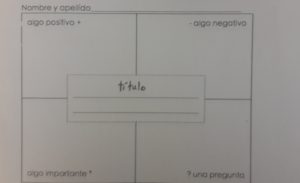


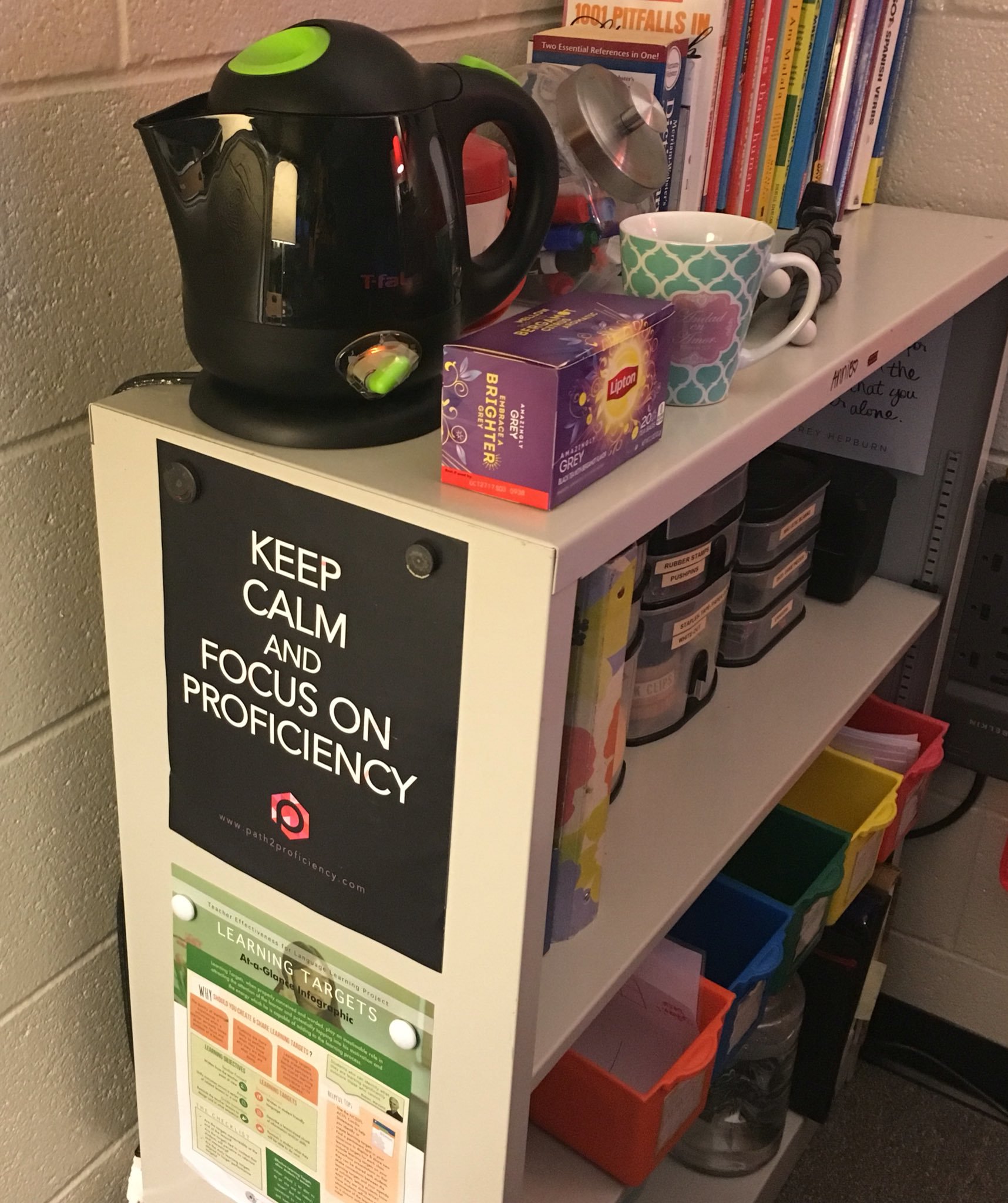
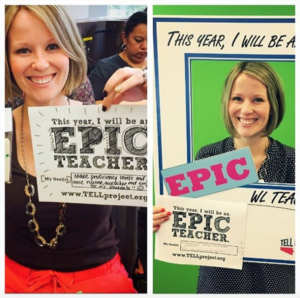 … as in, a self-assessment, on proficiency. Ask yourself: “What exactly do I know about the levels and what they look like? Can I explain it to students, and/or parents? Can I hear, read, and observe examples and then rate them?”
… as in, a self-assessment, on proficiency. Ask yourself: “What exactly do I know about the levels and what they look like? Can I explain it to students, and/or parents? Can I hear, read, and observe examples and then rate them?”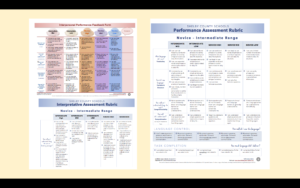 After we do those and I can circulate and see where we are (namely the students I don’t know yet), we’re going to transition into explaining proficiency and getting their portfolio folders set up. My students will already have theirs from Spanish I, but the rest will not, nor are they familiar with proficiency. (
After we do those and I can circulate and see where we are (namely the students I don’t know yet), we’re going to transition into explaining proficiency and getting their portfolio folders set up. My students will already have theirs from Spanish I, but the rest will not, nor are they familiar with proficiency. (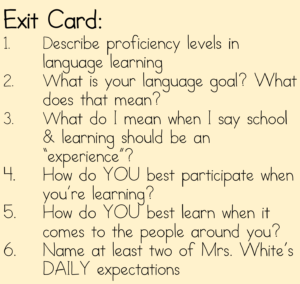 Lastly, after we’ve set up their folders, they have written self-assessed using YouTube examples, indicators, and my explanations, they will complete their exit card which includes proficiency questions to formatively assess their understanding. Proficiency isn’t easy for teachers to learn and it can be really abstract for students to get a handle on. I find that a thorough but succinct explanation, multi-modal examples in English, and self-reflection really helps them grasp the jargon and meaning behind it.
Lastly, after we’ve set up their folders, they have written self-assessed using YouTube examples, indicators, and my explanations, they will complete their exit card which includes proficiency questions to formatively assess their understanding. Proficiency isn’t easy for teachers to learn and it can be really abstract for students to get a handle on. I find that a thorough but succinct explanation, multi-modal examples in English, and self-reflection really helps them grasp the jargon and meaning behind it.


